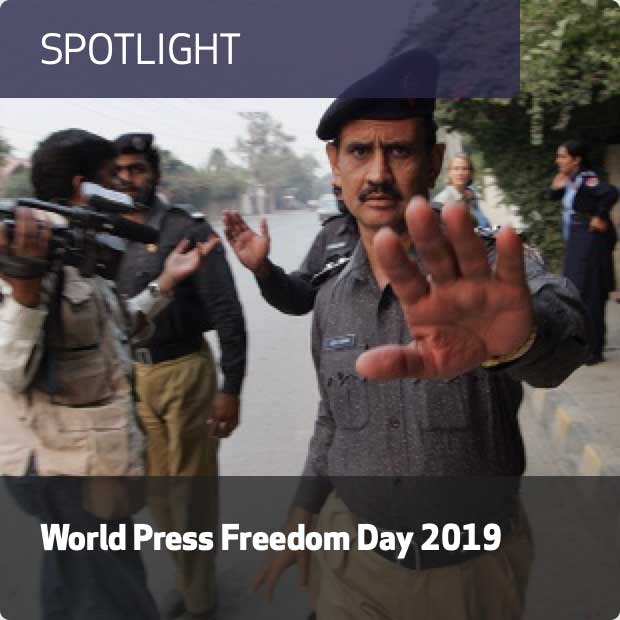Central Asia: Little Free Media, Lots of Russian Propaganda
IWPR Central Asia programme manager Abakhon Sultonnazarov assesses the state of press freedom in each country.
In Uzbekistan, there is hope for change and there has been some real movement since President Shavkat Mirziyoyev took power in late 2016. The changes he has initiated in different areas apply to the media as well. The problem is that he makes statements and then the process seems to get stuck at the ministerial or local government level . For instance, in February he announced the appointment of a media ombudsman to resolve disputes between media, the state and citizens. Currently this role only exists on paper but we will see. And the fundamental issues of censorship continues.
If we look at freedom of speech in Central Asia, the countries have many things in common - not least their vulnerability to Russian propaganda - but all have to be considered separately.
State control of almost all media remains strict. There are a few independent outlets online that function with support from international organisations but they don’t play a big role.
Journalists will be further controlled through an accreditation process also announced in February that will give them the right to work as well as access to government offices. A lot of international media is still blocked, and internet access in general is patchy. Facebook is mostly blocked or difficult to access; the most popular app is currently Telegram.
Self-censorship is very high, journalists avoid telling the truth. If the president criticises any aspect of government, then the media feel able to follow suit, but otherwise, the media, whether television or online, is not critical or questioning.
The situation is still poor; if we take the Reporters Without Borders index as an indicator, Uzbekistan is 160 out of 180. But last year it was 165.
In Kazakstan, most media are state-run or owned by business entities who don’t want trouble with the government. There are some small independent online outlets with modest budgets and again they don’t have much influence. The regime is able to keep everything under control. Russian media has a major influence
The situation in Kyrgyzstan is much better than in all other Central Asian countries. It’s at 83rd place and there are no major problems with freedom of speech. There is more media plurality, although the state-run media very rarely criticises the president or the government. The rest of the media is politicised and belongs to various interest groups. As for Kyrgyz journalists themselves, they still have to improve; they tend to privilege opinions over facts, for instance.
For the Turkmen media there is no state, no country – they do not praise the government, only the president. It’s his personal media. There is internet access but it’s very expensive and very controlled, with no social media. They have access to Turkish TV series and Russian comedies through satellite and cable TV, and that’s about it. As far as Reporters Without Borders are concerned, Turkmenistan has broken its own record, by dropping from 178 last year to 180 this year. It has the honour of being in last place.
In Tajikistan, the situation is also getting worse. In recent years, the Tajik authorities have become obsessed with bloggers and use a kind of Chinese model of strict control and internet censorship. They block specific sites on a daily and even hourly basis, whether it be local, international or social media. Ten years ago Tajikistan and and Kyrgyzstan shared a similar level of press freedom; now there is a massive difference. From year to year, government control has increased and the situation has got so bad that many Tajik journalists have simply left the country.
One small success in Tajikistan has been IWPR’s work on introducing the topic of radicalisation into public debate. The role of Islamic State and the fate of the wives and children returning from Syria and Iraq weren’t topics that were discussed at all, but now the local media have started reporting on it. We also have managed to introduce coverage of religious minorities and interfaith issues, something that was also not discussed at all.
Russian disinformation remains a serious issue across all five countries. (China is also trying to develop its soft power; there are Confucius cultural centres in each country and Chinese TV available through cable and satellite.)
Russian is the common language and there are a huge number of media outlets available in the region, whether TV or online like Sputnik. Russian news is just propaganda - all about the positive role of Russian in Syria and Ukraine as opposed to the West’s negative role - but people have nothing to compare it to. Across large swathes of rural Central Asia, people only have access to their national or Russian TV, and they prefer what Russia has to offer. The content is of much higher quality, from sitcoms to talk shows and music programmes. And of course news is mixed in with this so people end up watching it almost by accident. Their editorial strategy is very smart and country specific, making it a challenge to build resilience. This is especially hard when it comes to the immediate post-Soviet generation. IWPR is currently using its regional analytical CABAR.asia platform to train local journalists in all Central Asian countries so as to raise standards across local media. Covering local news objectively helps counter fake news and provide regional audiences with balanced content.
Young people are more open, and that’s where these sustainable projects can make a difference.
Abakhon Sultonnazarov is IWPR's Central Asia Programme Director, based in Bishkek.

